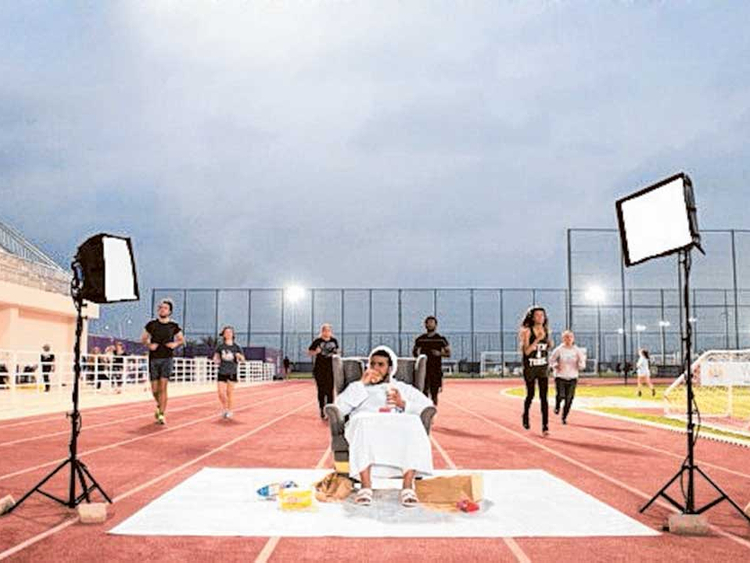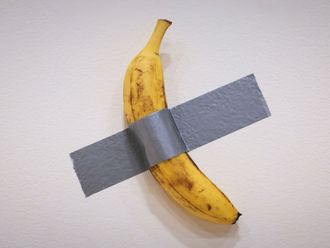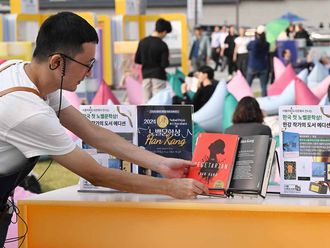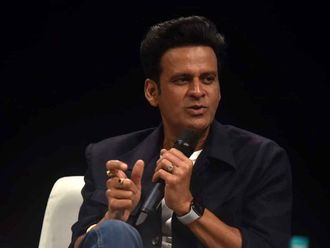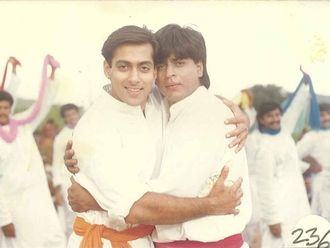Abu Dhabi: Having been faced with several misconceptions about what it means to be an Emirati, Sarah Al Ahbabi, a graduate of New York University Abu Dhabi (NYUAD), created an art project depicting these characterisations through photography in the hope of starting a conversation to break down stereotypes.
Throughout my life I have come across stereotypes of Emiratis, so I decided to address these misconceptions through photography. People are often reluctant to talk about sensitive subjects; through art, I believe we could start a discussion on the issue,” Al Ahbabi told Gulf News.
“The pictures depict the different types of stereotypes. In one picture, there is an Emirati student sitting down eating a hamburger while the rest of the students are running behind him [this addresses the misconception that Emiratis are not hard-working]. Another photograph shows an Emirati woman beside a tree that has money growing on it [this alludes to the misconception that all Emiratis are rich and have it easy].”
How are the misconceptions born? “I think the main and most powerful source for the misconceptions on who Emiratis are is definitely the media,” said Al Ahbabi.
“As part of my capstone research paper, I mentioned that journalist Jack Shaheen has inspired me a lot and in one of his books, A is for Arab: Archiving stereotypes in US popular culture, he archived how the media portrayed the Arab world from the early 1900s to today. Due to limited access, people will resort to the media in order to understand something that is unfamiliar to them, therefore, yes, the media can sometimes be the largest contributor to misconceptions of cultures, religions, countries, etc.”
Al Ahbabi said she enjoys watching the reactions on people’s faces when they view the photographs, with the feedback having been positive so far from audiences.
The photographs proceed in a sequence that is designed to jolt the viewer into sudden comprehension of the presence of stereotypes. “The photographs that are shown get more sensitive along the way,” Al Ahbabi said. “At first, the audience thinks these are some photos about heritage and culture because the first few pictures are photos of the Bedouin lifestyle, but then comes the picture about the stereotypes of Emiratis and oil and, in those few seconds, I look to their faces to see [their] reaction.”
The reactions and feedback have been amazing so far, said Al Ahbabi “from both Emiratis and non-Emiratis. Emiratis who have seen the photos would come up to me and tell me that they have been victims of the same stereotypes.
“The non-Emiratis for their part would tell me how thought-provoking the exhibition was. I even had one person admit to me that they held some of these preconceived ideas about Emiratis”.
The process of creating the pictures and their context was meticulously planned by Al Ahbabi in order to ensure that they convey the message correctly.
“It took six to eight months to complete [the project], with the pictures representing my personal experiences as well as that of other Emiratis I talked to,” she said.
“It was a difficult and challenging process. There were 15 different locations for the photo shoots, and I chose eight that were aesthetically powerful to [convey] the vision. Each photo shoot was also done at least three times to get the perfect shot. So these were three different photo shoots on three different dates with different people coming in,” she added.
Al Ahbabi encourages the use of art as a platform for engagement, noting its positive effects for sensitive subjects.
“I think art can spread awareness in a very powerful way. It can start that first step into solving political and social issues by creating a conversation,” she said.
“A big part of my project was to be present at my exhibitions for people to approach me, and if they didn’t, I would approach them to start a discussion,” she added.
Through her project, Al Ahbabi ultimately hopes to convey an accurate representation of Emiratis — who they truly are, and not who they are perceived to be.
“What I know for a fact is that I am a hard-working person. I want to be recognised by my own credentials.”


